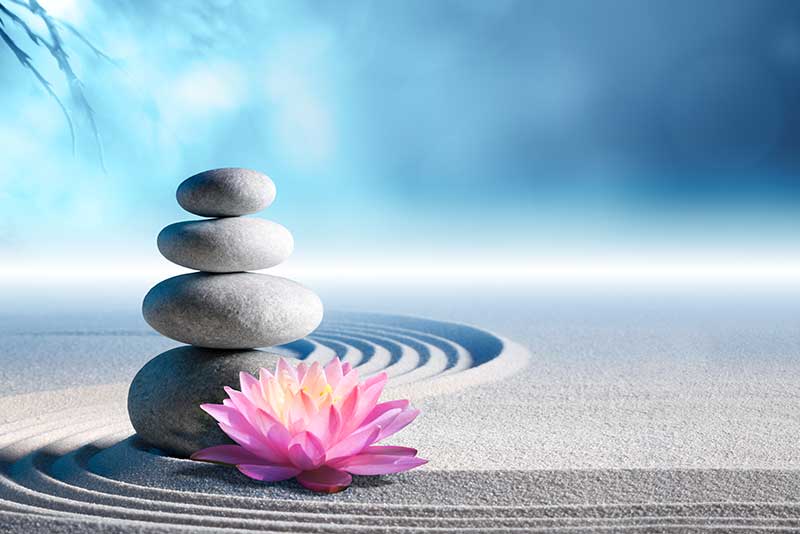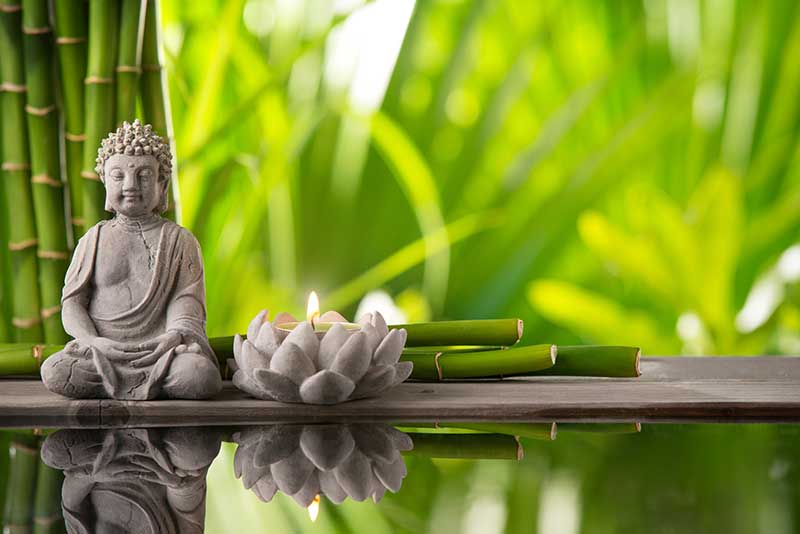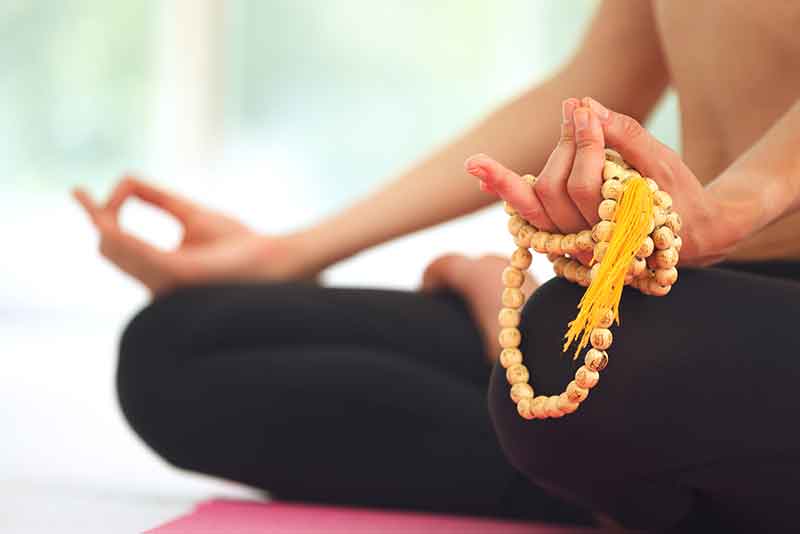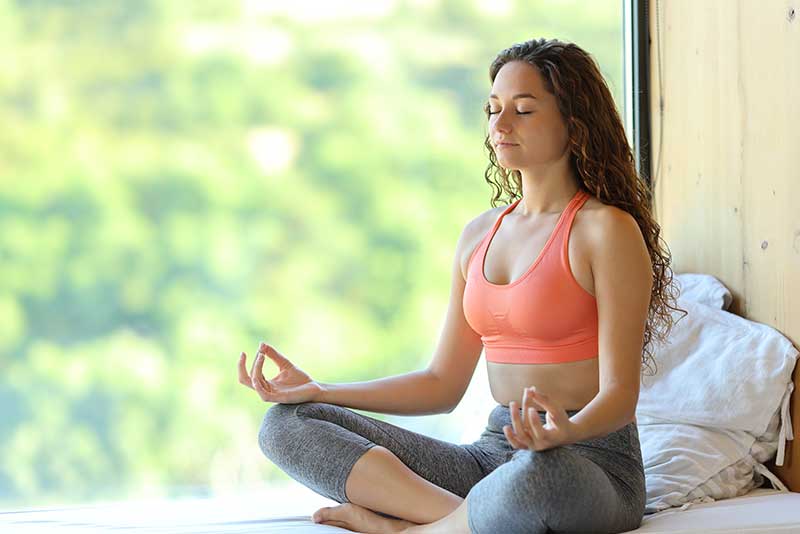If you are quiet enough, you will hear the flow of the universe. You will feel its rhythm. Go with this flow. Happiness lies ahead. Meditation is key.” – Gautam Buddha.
2500 years ago, India gave birth to a religion that spread across Asia, profoundly influencing spiritual, cultural, and social constructs. Today, Buddhism remains a sought-after path for spiritual journeys worldwide. With the rise of interest in mindfulness and holistic well-being, Buddhist meditation techniques have gained immense popularity, even in the West.
Buddhism is a religion based on the teachings of Gautam Buddha, and meditation is a core part of its practice. Meditation in Buddhism forms part of the threefold path, which includes Ethics, Meditation, and Wisdom. Over time, Buddhist meditation practices have evolved and adapted across different cultures, offering a wide range of techniques to suit various needs.
In this article, we will explore fifteen of the best Buddhist meditation techniques that can guide you on your journey to inner peace and mindfulness. Whether you are a beginner or an experienced practitioner, these techniques can help you overcome the typical challenges people face with meditation. Let’s dive in and find the practice that resonates with you the most.
By addressing these common objections upfront and providing reassurance and practical advice, readers are more likely to feel engaged and motivated to read the entire article.
Types of Buddhist Meditation
Broadly speaking, Buddhist meditations can be divided into four types of practices, namely
- Concentrative – Here focus in a particular stimulus (experience, object or feeling) is targeted for increased concentration.
- Generative – This includes feeling compassion for self and others hence generating harmony.
- Receptive – Here focus is given on being more receptive or accepting of the stimulus around us.
- Reflective – Reflective meditation involves turning your focus to one theme while being receptive of the experiences arising from it.
The practices we will be discussing further are concentrated and derived from these four types. So, without further ado, let’s explore the realm of Buddhist Meditation practices.
1. Zen Meditation

Zen is all about being the part of present with complete awareness. The practice demands being aware of all happening around us, making full use of our senses. Zen practice believes in letting the thoughts flow without any kind of Judgement and blockage and then ultimately making the mind still.
Zazen is the key component of Zen practice. Zazen means a particular sitting posture while practicing. There are several ways of performing Zen meditation such as concentrating on one’s breath or chanting mantras.
2. Koan Meditation
Koans are questions, statements and paradoxes to provoke spiritual understanding. Koan reflects on truth-based ideologies and develops one’s understanding of oneself. Koan act as a teaching tool; here the teacher asks koan to test the understanding and enlightenment of his pupil.
There is no unique or right solution of Koans; they can have multiple answers depending on the level of perception. Koans don’t need analytical reasoning but the answers are to be found intuitively. One very famous koan is, “In clapping both hands a sound is heard; what is the sound of one hand?”
3. Tonglen Meditation
Tonglen meditation is a Tibetan tradition. It is the practice of giving or receiving. It teaches us to see the world with compassion and kindness. This meditation teaches us to see the world with compassion and love; being empathetic towards others is the key learning of this meditation. Traditionally, this practice involves breathing in all the sadness and darkness of the world and breathing out all your love and wishes.
4. Walking Meditation
Walking meditation is an advance meditation technique especially for those who find lack of time to perform meditation. Here you have to focus on the movement of your body and everything around you, the steps are to be synchronized with the rhythm of breath and in this way one can become focused on self.
5. Qigong Meditation

Qigong practice originated from China, it is one of the best Buddhist meditations. It focuses on balancing the strength and energy. Here instead of sitting still you have to perform some movements. Qigong also helps in healing, lowering stress and anxiety, this exercise involves exercise, relaxation and preventive medicine.
6. Tai Chi Meditation
Tai Chi is also a Chinese practice, it is more like a martial art practice. However, it is also beneficial for your mental health. This is a meditation of motion as it includes several postures, gentle physical exercises and stretches. This exercise can help maintain strength, flexibility and balance. It is a prevalent technique among Relaxation Meditations.
7. Samatha Meditation

Samatha Meditation uses breath as an object of meditation. Breathing Meditations in Buddhism are quite popular, focusing on breath is used to increase concentration and calm the mind, to increase concentration counting of breath can be used. An external object can also be used to meditate such as a Buddha statue. This meditation brings greater peace and happiness into our lives, as we develop insight and travel to deeper states of awareness.
8. Vipassana Meditation
This meditation involves paying attention to the arising and passing away of sensations in each of your different parts of your body. Vipassana meditation is probably one of the most practical Buddhist meditation techniques that gives highly beneficial result. In Theravada Buddhist schools, this is the pinnacle of meditation practices, being the main method for developing insight into our true nature. Although, it can sometimes take a more analytical approach of questioning, such as ‘Where is the self?’, and through examination one becomes free from self-grasping.
9. Metta Meditation
Metta is essentially a Pali word meaning kindness, compassion and goodwill. It helps in enhancing one’s ability to empathize with others, spreading love to others and boosting self-love. To perform this meditation, one needs to generate feelings of love and kindness in oneself and then direct these feeling toward others. The practice of this meditation brings peace and harmony to your lives.
10. Mantra Meditation

Mantra meditation traces its origin to India. A mantra is a syllable or word which is repeated over and over to focus the mind, the choice of word and correct pronunciation is taken care of as each word has a vibrational energy that coincides with the practitioner. The most popular mantra used is Om but it can vary depending on the practitioner.
11. Transcendental Meditation

Transcendental meditation is rather a new technique, it was introduced by Maharshi Mahesh Yogi in 1950s. It slowly gained momentum in western countries. Transcendental meditation is more like a concentration practice. In this practice, people silently repeat a mantra for 20 minutes or more twice a day, using a specific mantra. It is a specific course which requires training.
12. Deity Meditation
Deity Meditation is quite a popular practice in many of the Buddhist sects, it involves visualizing a deity as an external being or yourself as the deity, reciting of specific mantras and meditating on spiritual qualities possessed by the deity. Green Tara, Chenrezig, vajrasatva are some deities on which the pupil meditates.
13. Body Scanning Meditation
Body scanning meditation is a way of becoming more alive and aware of the present. It is the preparatory phase of Mindfulness Meditations in Buddhism. Here the practitioner slowly moves through the body, paying attention to each body part and sensation attached to it, it can be performed by sitting or lying down. It is a beginner friendly technique to achieve mindfulness.
14. Meditation on Impermanence
Meditation on impermanence makes us realize the transient nature of the worldly pleasures. The realization of temporariness of the world inspires us to live as much as we can in the moments provided to us. It inspires us to not delay on anything we aspire. Furthermore, it makes us more acceptable to the changes of life and we learn to deal with it; it fills us with a sense of nothingness so we truly realize our merger with the greater truth.
15. Shikantaza
Shikantza meditation is an objectless meditation. it is not a focused mediation. Here the aim is to simply sit and observe your thoughts, then gradually move towards a state of concentration. This technique requires alertness, so your back should be quite straight, and you should let your mind wander alone to reach a point of non-thinking
Bottom Line
We have given a brief account of fifteen best Buddhist meditation practices. As with any ideology, every practice has a different objective. You can choose the one which aligns with your goals and visions and if not one you can try out multiple practices to find out your perfect fit. The more we are advancing on materialistic aspects the more we are losing connection with our inner self and at such times it is necessary to go in search of your true self and meditation is your key to attain that true knowledge.
References:
https://www.ncbi.nlm.nih.gov/pmc/articles/PMC4471252/
https://www.ncbi.nlm.nih.gov/pmc/articles/PMC6753170/
https://www.ncbi.nlm.nih.gov/pmc/articles/PMC9623891/

Anjani Kumar Shrivastava, a distinguished yoga expert with decades of experience, brings healing and wisdom through yoga therapy, meditation, and Ayurvedic principles. His remarkable Read more



